What does George Strait have to do with amaryllis plants? Not a darn thing, except that whenever I’m thinking about them, the song Amarillo by Morning starts playing in my head (and if that fiddle doesn’t kill you, there’s something amiss). My brain is a Rolodex of song lyrics. It’s rather an affliction.
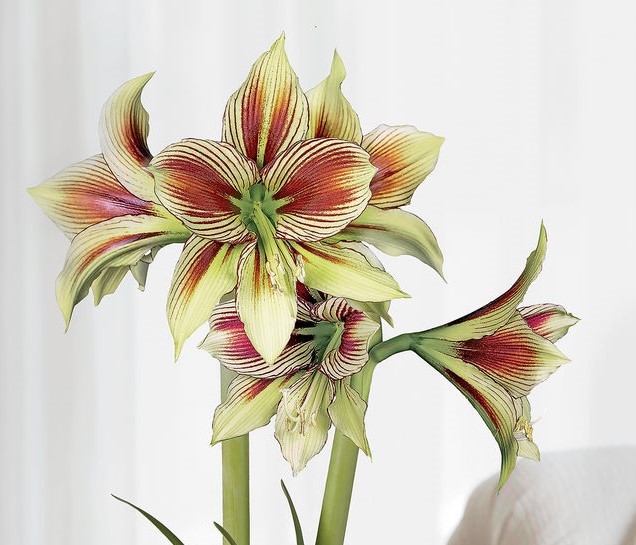
Enjoy those showy blooms as long as they last. You can prolong their blossoming period by keeping them out of direct light and in bright, indirect light. Many bulbs will send up two flower stalks and sometimes even three. Once the flowers fade, cut back the flower stalk, making sure you’re not taking out another flower stalk. You can see a new stalk growing to the right of the one in flower in the photo to the right.
In order to bloom the next year, the bulbs need to store up lots of energy. Keep the plants in full sun and feed them regularly throughout the spring and summer. I move mine outside where they get lots of light. They’re not the most attractive foliage plants so, if you tuck them away, don’t forget them!
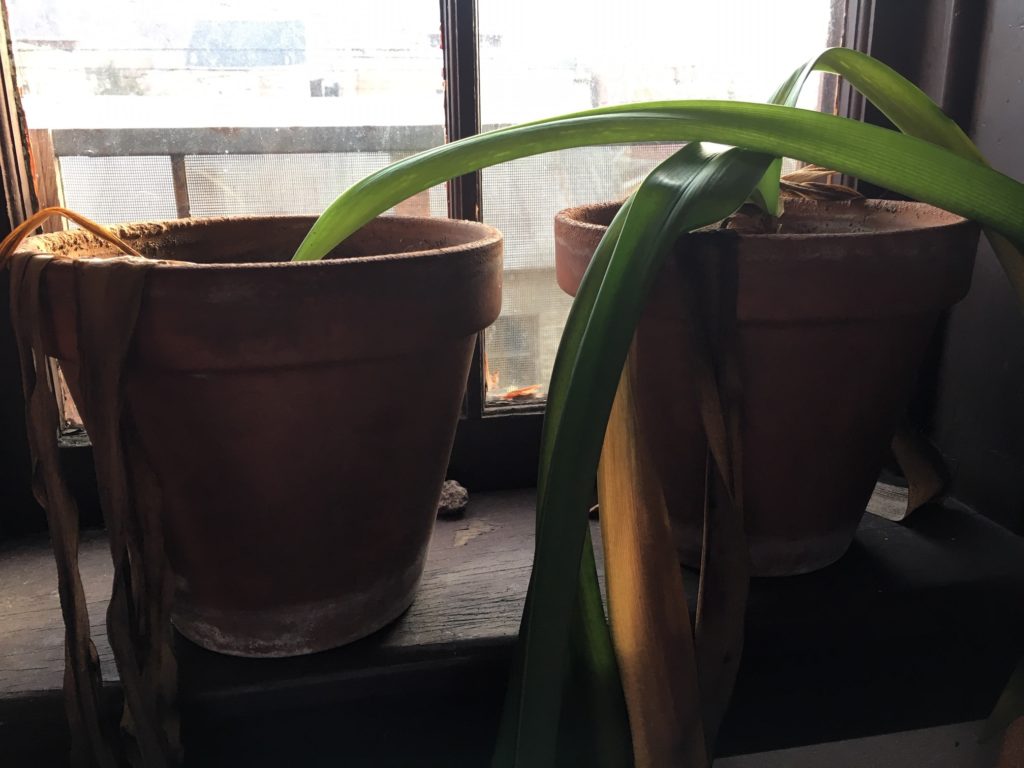
Amaryllis bulbs are popular gifts and decorations around the holidays, with so many colors and varieties to choose from. I have two in shades of pink that I’ve had for years and two I got in 2016 that reminded me of orchids, with some gorgeous striping. With some attention after they bloom, you can bring those glorious blossoms back year after year.

Once the temperatures get cooler in the fall, I move mine onto window sills in my unheated back hall, continuing to water and feed them. I have read that you can force them to bloom at the holidays by withholding water starting in early September, cutting all the leaves off and moving them into darkness for 8-10 weeks, then bring them into full sun and resume watering. I tend to let them do their own thing and tell me when they’re ready to be dormant. As soon as leaves start yellowing and turning brown, I stop all water. I let them stay in the cool back hall until most of the leaves have died back, then cut those off and put them in the darkness of our basement.
I don’t let their dormancy be dictated by the calendar but, again, let them tell me when they’re ready. I check the plants every week or so for the first leaf shoot to appear; because it’s been in the dark, it’s very pale . Once that emerges, it’s a good watering and into a sunny window. I don’t water again until I can detect more growth and the leaves start to turn green, and then it’s back to regular watering; I don’t bother with feeding until after the flowers fade. The first flower stalk can emerge along with the first leaves or at any time it feels like it.
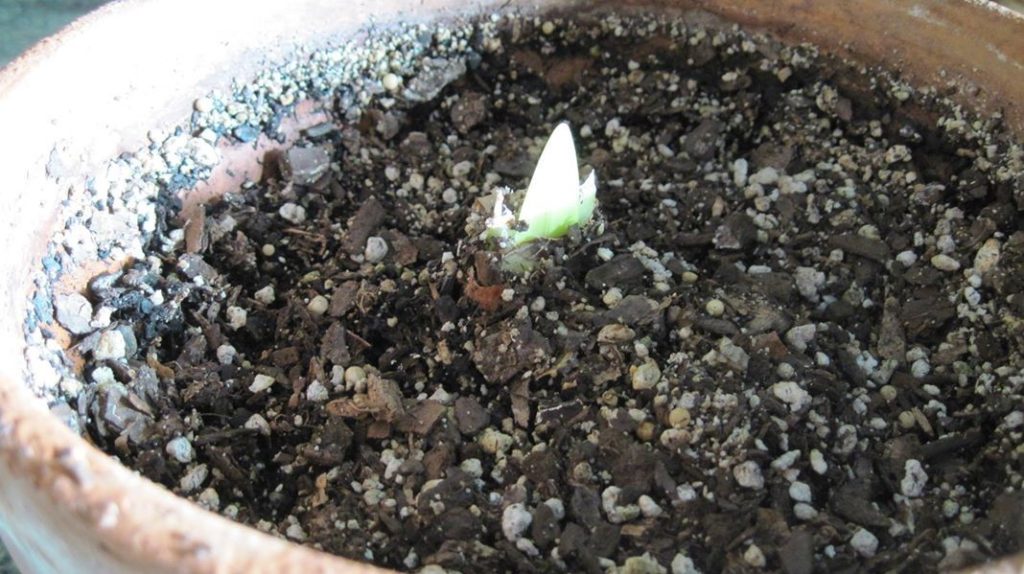
Amaryllis like somewhat cramped quarters so I keep them in the same pot for a long time. If there is need for re-potting, this when I would do it, shaking the dry dirt off the roots and potting them up in fresh soil with their first watering. Sometimes an offshoot bulb will develop (you can tell if there are two distinctive sets of leaves) and this would be when you could separate the smaller bulb from the larger and put them in their own pots. It takes a year or two for that bulb to get big enough to flower.
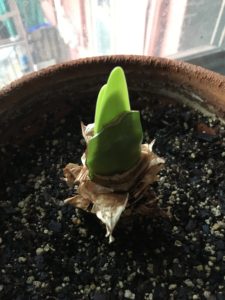

I have some amaryllis bulbs that were given to me in the 1990s that have continued to thrive, usually blooming for me in late winter, when I need a little reminder that spring is coming. Their spectacular display is ample reward for the little attention they require.


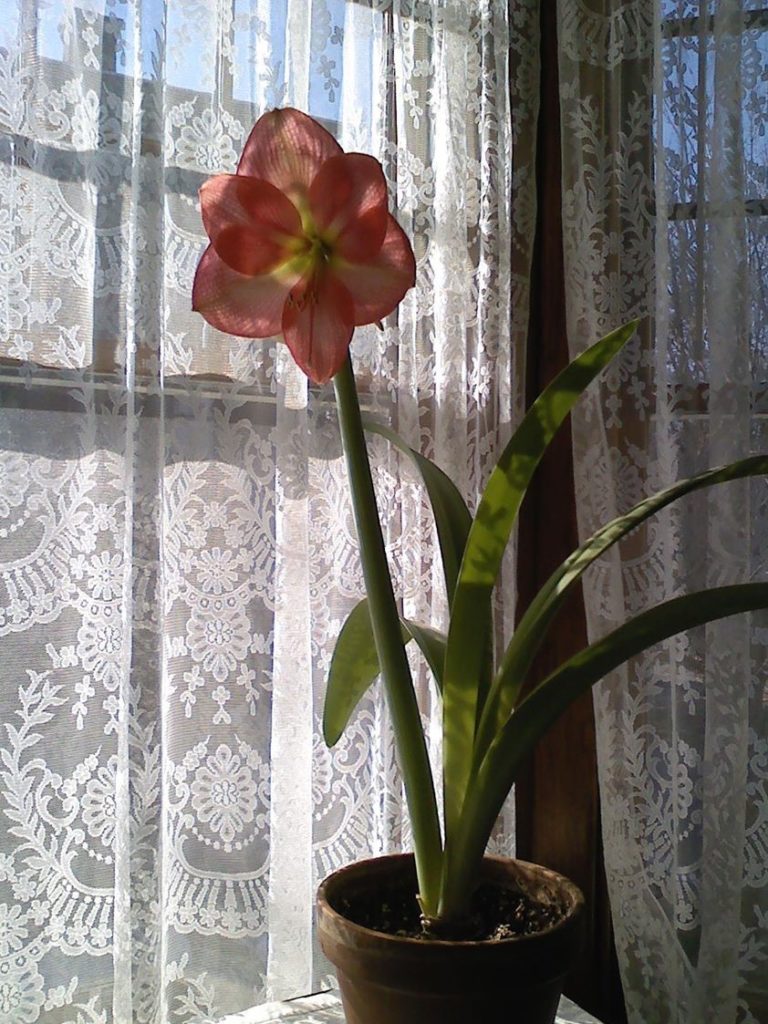

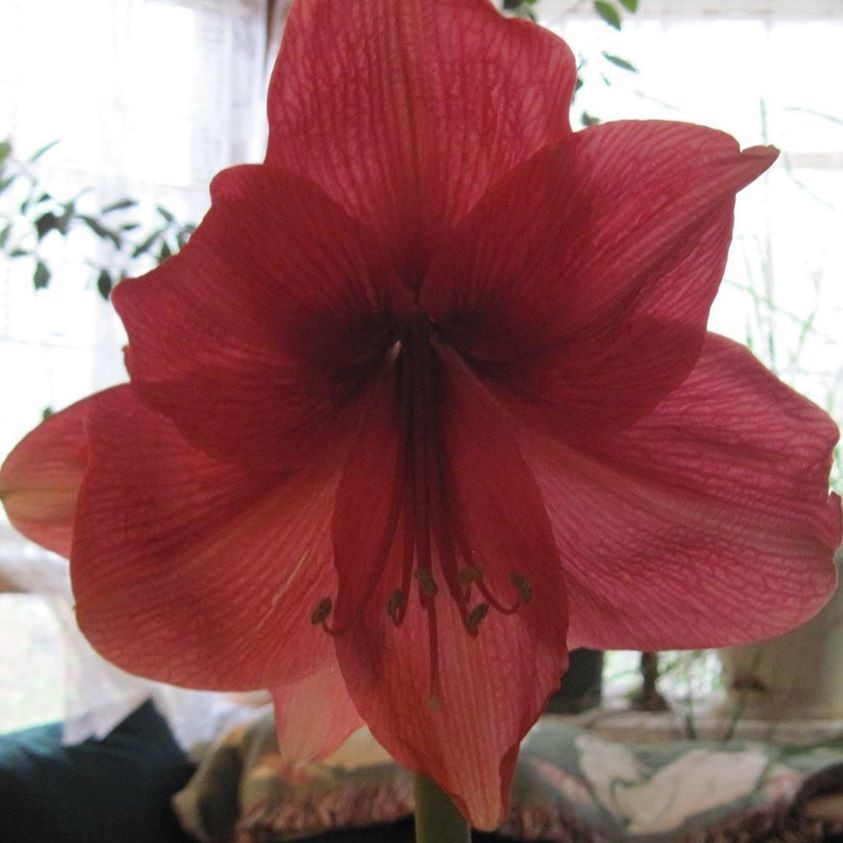
Joshua Vincent
5 Jan 2019Lovely, and I’d like to know why ours have croaked!
Handmade Bits and Bobs
6 Jan 2019It’s the post-bloom maintenance that sets up the next year’s growth; must not have stored up enough energy in the bulb.
Carolyn Hauben
5 Jan 2019Absolutely gorgeous and very informative.
Handmade Bits and Bobs
5 Jan 2019Just a little TLC and they bloom for years 🙂